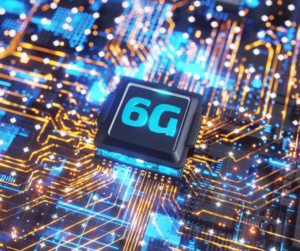Comparing the Future of 5G and 6G
In our ever-evolving digital landscape, the discussion surrounding the future of wireless communication technology is nothing short of fascinating. Two prominent players in this space are 5G and its successor, 6G. These technologies are set to revolutionize the way we connect and communicate. In this article, we will explore the exciting prospects of 5G and the promising frontier of 6G.
What is 5G?
To kick things off, let’s dive into what 5G is. The “G” in 5G stands for “generation,” signifying that it’s the fifth generation of mobile networks. 5G is designed to be faster, more reliable, and to provide significantly lower latency than its predecessors. It promises to offer blazing download and upload speeds, making activities like streaming, online gaming, and video conferencing smoother and more efficient.
The Promise of 5G
The promise of 5G extends far beyond faster internet speeds. It’s set to enable the Internet of Things (IoT) on a massive scale. From smart homes and self-driving cars to telemedicine and augmented reality, 5G will be the backbone of a more connected world.
The Evolution of 6G
Now, let’s shift our focus to the next big thing: 6G. Although it’s still in the conceptual phase, 6G represents the next evolutionary step in wireless communication. The sixth generation is expected to take the capabilities of 5G to a whole new level.
What is 6G?
6G is envisioned as a network that’s even faster and more efficient than 5G. It is expected to support data speeds of up to 100 times faster than 5G. This would mean downloading massive files in the blink of an eye and nearly instantaneous response times for real-time applications.
Anticipated Benefits of 6G
The benefits of 6G are truly exciting. It’s expected to revolutionize various sectors, from healthcare and transportation to entertainment and education. Imagine remote surgeries being conducted flawlessly, immersive virtual reality experiences, and ultra-responsive autonomous vehicles – these are all part of the 6G vision.
Speed and Latency
One of the primary differences between 5G and 6G is speed and latency. While 5G offers impressive speeds, 6G is expected to provide data rates beyond our current comprehension and virtually zero latency. This low latency is crucial for applications that require instant feedback, such as remote surgery and augmented reality gaming.
Spectrum and Frequencies
Another key aspect to consider is the spectrum and frequencies used. 5G primarily relies on the millimeter wave spectrum, which offers high speeds but has limited range. In contrast, 6G may use terahertz frequencies, opening up new possibilities for long-distance, high-speed communication.
Infrastructure and Deployment
The deployment of 5G is already well underway, with many regions around the world embracing this technology. However, 6G is still in the research and development phase, and its deployment is likely years away. The transition from 5G to 6G will require significant infrastructure enhancements.
Use Cases and Applications
5G has already found applications in various fields, from smart cities and manufacturing to entertainment and agriculture. On the other hand, 6G’s applications are only limited by our imagination. It could redefine how we interact with technology and the world around us.
5G vs. 6G: A Comparative Analysis
To understand the differences better, let’s compare 5G and 6G:
- Speed: 6G is expected to be significantly faster than 5G.
- Latency: 6G promises almost zero latency, while 5G offers lower latency compared to its predecessors.
- Applications: 5G is already being used in various sectors, but 6G’s potential applications are groundbreaking.

The Challenges Ahead
While the future looks incredibly promising, there are challenges to overcome. These include regulatory hurdles, security concerns, and the massive investments required to build the necessary infrastructure.
The Future of Connectivity
In conclusion, 5G is already transforming the way we connect, and 6G is poised to push those boundaries even further. The future of wireless communication is incredibly bright, offering a world where information is always accessible, devices are seamlessly connected, and innovative applications are endless.
You can also read: Ensuring Secure 5G Communications
FAQs
- What is 6G?
- 6G is the sixth generation of wireless communication technology, expected to succeed 5G. It aims to provide even faster data speeds and lower latency.
- How will 6G benefit healthcare?
- 6G can enable real-time remote surgeries and telemedicine, ensuring that medical procedures are conducted with utmost precision and speed.
- What challenges does 6G face?
- Some challenges include regulatory issues, security concerns, and the immense investment required for infrastructure development.
- Will 6G replace 5G entirely?
- 6G is expected to complement 5G rather than replace it. Both technologies will coexist and cater to different needs.
- When can we expect 6G to be available to the public?
- The rollout of 6G is still in the early stages of development, and it may be several years before it becomes widely available.